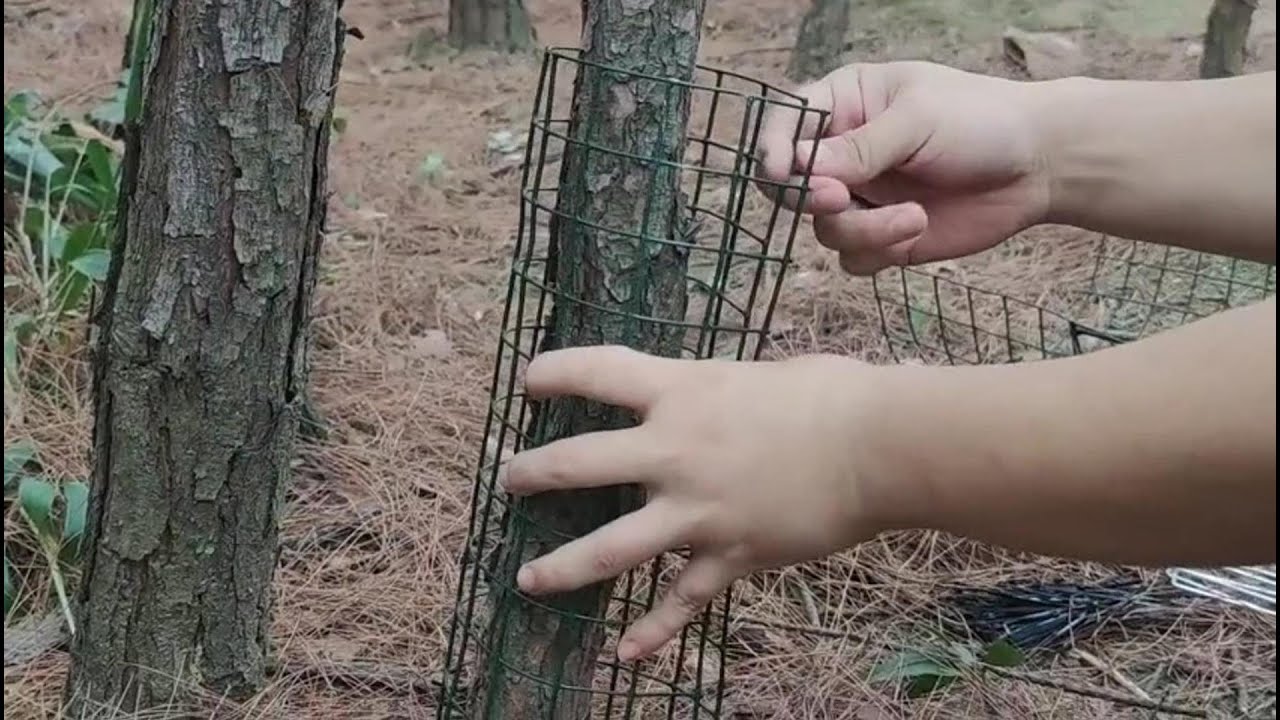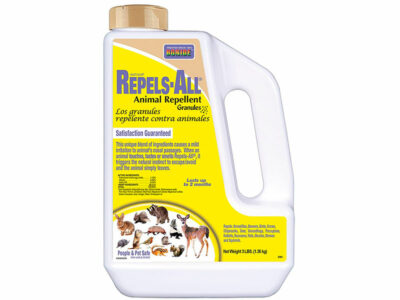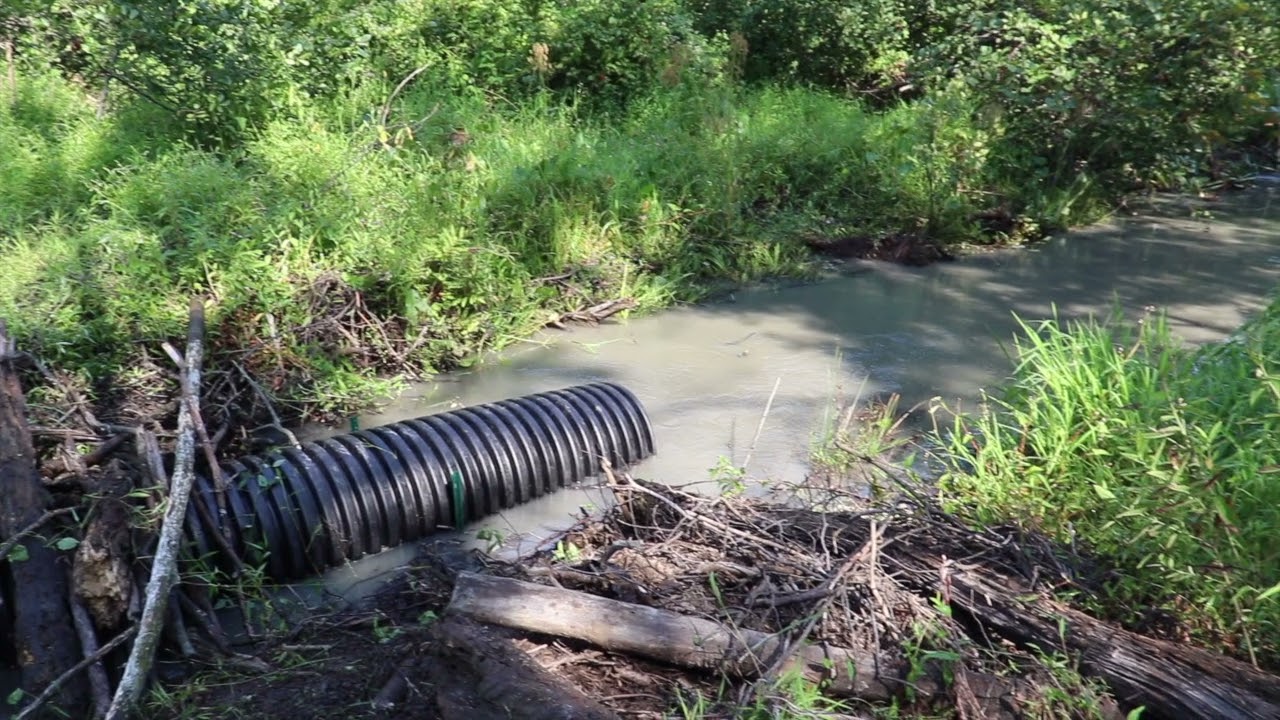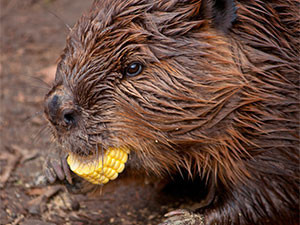Beavers can cause significant property damage through tree destruction and flooding from dam construction. These industrious rodents can fell mature trees overnight and create water backups that damage landscapes, structures, and drainage systems. Our comprehensive guide covers the most effective beaver repellent methods, from physical barriers to humane removal techniques, helping you protect your property without harming wildlife.
Quick Picks: Best Beaver Repellent Products
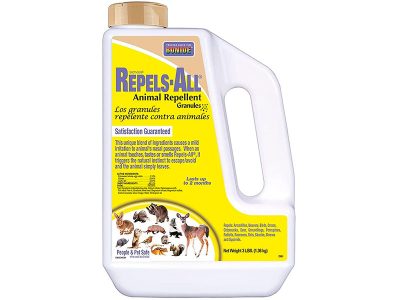
Editor’s Choice

Best Value
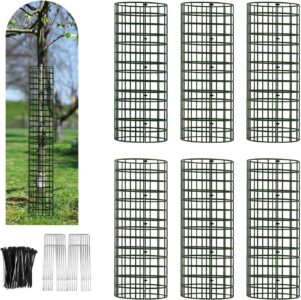
Most Durable
- Understanding Beaver Behavior and Damage
- Physical Beaver Repellent Methods
- Chemical Beaver Repellents
- Flooding Prevention Strategies
- Humane Beaver Removal
- Seasonal Beaver Activity Patterns
- Cost-Benefit Analysis of Beaver Control Methods
- Frequently Asked Questions
- Professional Beaver Control Services
- Conclusion
Understanding Beaver Behavior and Damage
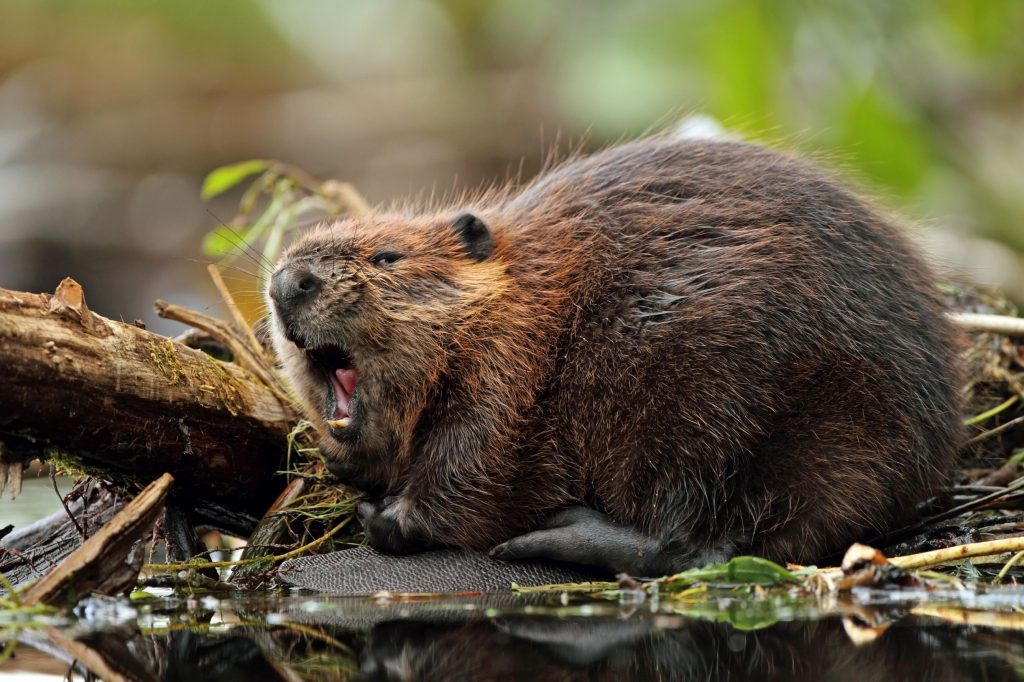
Beavers are North America’s largest rodents and natural ecosystem engineers. Their constant need to gnaw keeps their ever-growing incisors filed down, while their dam-building instincts create wetland habitats. However, these behaviors can conflict with human property management.
Tree Damage
Beavers can fell trees up to 3 feet in diameter overnight. They prefer softwoods like aspen, poplar, willow, and birch within 100 feet of water sources.
Flooding Issues
Beaver dams can cause water backup, flooding property, damaging foundations, and disrupting drainage systems during heavy rain or snowmelt.
Economic Impact
Property damage from beavers can cost thousands in tree replacement, landscape restoration, and flood damage repair.
Beavers can carry diseases including tularemia, rabies, and parasites. Always wear protective gear when working near beaver areas and avoid contact with beaver-contaminated water.
Physical Beaver Repellent Methods
Physical barriers are the most reliable long-term solution for protecting trees and preventing dam construction. These methods work by denying beavers access to their preferred materials and locations.
Wire Tree Guards and Cages
Tree cages create an impenetrable barrier around individual trees, making them the gold standard for tree protection. Professional wildlife managers consider this the most effective beaver deterrent method.
Installation Steps:
- Select proper materials: Use galvanized welded wire fencing with 2-inch maximum openings and minimum 3-foot height
- Create stability: Dig a shallow trench 2-3 inches deep around the tree, avoiding root damage
- Maintain spacing: Keep the cage 6 inches away from the trunk to allow for growth
- Secure the barrier: Use zip ties or galvanized wire to connect cage edges
- Stake for support: Use metal stakes woven through fence holes for additional stability
For trees that beavers access by leaning on the fence, install a double-layer system with staggered heights or angle the top portion toward the tree trunk for additional support.
Cost-Effective Alternatives:
- Hardware cloth: Suitable for smaller trees and exposed roots when staked properly
- Chicken wire wraps: Less durable but adequate for temporary protection (requires frequent adjustment)
- Root protection: Hardware mesh staked over exposed root systems
Sand and Paint Mixture
The USDA-tested sand and paint method creates an uncomfortable texture that deters beavers from gnawing. This method works best on mature trees with established bark.
| Tree Size | Effectiveness | Maintenance | Cost |
|---|---|---|---|
| Mature Trees (6+ inches diameter) | High | Annual reapplication | $5-10 per tree |
| Young Trees (2-6 inches) | Moderate | Semi-annual touch-ups | $3-7 per tree |
| Saplings (under 2 inches) | Low | Frequent reapplication needed | $2-5 per tree |
Application Process:
- Mix 20 ounces of coarse masonry sand (30-70mm) with 1 gallon of exterior latex paint
- Choose earth-tone colors to maintain natural appearance
- Apply mixture 3-4 feet high around the entire trunk circumference
- Allow 24 hours drying time before potential beaver contact
- Reapply annually or after severe weather events
Perimeter Fencing
Large-scale fencing protects entire areas rather than individual trees, making it cost-effective for extensive property protection.
- Height requirements: Minimum 4 feet above ground with 6-inch burial depth
- Material specifications: Heavy-gauge welded wire or chain link fencing
- Maintenance needs: Regular inspection for damage, gaps, or undermining
- Enhanced protection: Electrification option for high-risk areas (requires professional installation)
Electric fencing around water sources requires special waterproof components and GFCI protection. Consult a professional electrician for safe installation near aquatic environments.
Chemical Beaver Repellents
While physical barriers remain most effective, chemical repellents can supplement protection strategies, particularly for foliage and smaller plants that beavers consume.
Bonide Repels-All Animal Repellent Granules
Editor's ChoiceHow Does It Work
How to Use
- Apply granules in a 3-foot radius around protected trees
- Reapply every 30-60 days or after heavy rainfall
- Can be used on both edible and ornamental plants when applied according to label directions
- Most effective when combined with physical barriers
- Long-lasting 2-month protection period
- Safe for use around children and pets when used as directed
- Biodegradable and environmentally friendly
- Easy granular application
- Strong odor may be noticeable to humans initially
- Requires regular reapplication for continued effectiveness
- Less effective during heavy beaver activity periods
Liquid Fence Animal Repellent
Best ValueHow Does It Work
How to Use
- Apply weekly for the first 3 weeks to establish scent barrier
- Switch to monthly applications for maintenance
- Spray directly on foliage and around tree bases
- Best applied during dry weather for maximum adhesion
- Multiple active ingredients for enhanced effectiveness
- Rain-resistant once dry
- Suitable for both trees and garden plants
- Economical coverage per gallon
- Requires more frequent initial applications
- Strong initial odor during application
- May need reapplication after extended wet periods
Application Best Practices
- Weather timing: Apply during dry conditions with no rain forecast for 24 hours
- Coverage area: Treat both trunk and surrounding soil in a 3-foot radius
- Seasonal considerations: Increase application frequency during peak beaver activity (spring and fall)
- Safety precautions: Wear gloves and avoid inhaling spray mist during application
Studies show beavers have lower sensitivity to capsaicin-based repellents compared to other mammals. Egg-based and multi-ingredient formulas show superior effectiveness for beaver deterrence.
Flooding Prevention Strategies
Preventing beaver dam construction requires making areas unsuitable for their engineering projects. The key is eliminating the standing water that beavers need for their lodge construction.
Drainage Systems
Strategic drainage installation disrupts beaver dam effectiveness, often causing them to abandon the site entirely.
Drainage Pipe Installation:
- Site assessment: Identify optimal drainage points downstream of dam construction
- Pipe selection: Use 6-8 inch diameter corrugated or PVC pipes for adequate flow
- Inlet protection: Install intake screens to prevent debris clogging
- Proper gradient: Maintain slight downward slope for consistent water flow
- Regular maintenance: Clear debris and inspect for damage monthly
Culvert Protection
Protecting existing culverts prevents beavers from blocking critical drainage infrastructure.
- Wire mesh installation: Surround culvert inlets with heavy-gauge fencing
- Spacing considerations: Allow adequate water flow while blocking stick placement
- Maintenance access: Design removable sections for cleaning and inspection
- Multi-point protection: Install upstream and downstream barriers for comprehensive coverage
Drainage modifications near waterways typically require permits from local environmental agencies. Check regulations before installation to avoid legal complications.
Humane Beaver Removal
When other methods prove insufficient, live trapping offers a humane solution that relocates beavers without harm.
Live Trapping Process
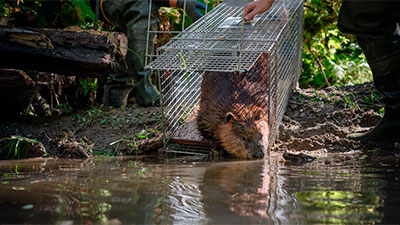
Equipment and Setup:
- Trap selection: Large cage traps (48+ inches) designed for beaver size
- Placement strategy: Position on established beaver trails and slides
- Natural camouflage: Cover trap bottom with mud, leaves, and local vegetation
- Guide construction: Place logs parallel to trap entrance to funnel beavers inside
Effective Baiting Options:
- Commercial beaver lure: Specifically formulated attractants
- Castor oil: Mimics natural beaver scent marking
- Fresh poplar branches: Preferred food source with strong appeal
- Apple slices: Sweet fruit attractant for supplemental baiting
Timing and Monitoring:
- Optimal timing: Set traps at dusk when beavers become active
- Check frequency: Inspect traps every 6-8 hours to minimize stress
- Weather considerations: Provide shelter and protection during adverse conditions
- Documentation: Record trap locations and check times for efficiency tracking
Beaver trapping and relocation laws vary by jurisdiction. Most areas require relocation at least 10 miles from capture site near suitable water sources. Never relocate onto private property without permission.
Post-Removal Dam Management
After successful beaver removal, proper dam removal prevents future flooding while allowing gradual ecosystem adjustment.
- Safety assessment: Evaluate potential flood risk from rapid water release
- Gradual removal: Dismantle dam in sections to control water flow
- Material disposal: Remove or mulch woody debris to prevent rebuilding
- Site monitoring: Watch for new beaver activity over the following months
Seasonal Beaver Activity Patterns
Understanding beaver seasonal behavior helps optimize repellent timing and effectiveness.
| Season | Activity Level | Primary Behaviors | Recommended Actions |
|---|---|---|---|
| Spring (March-May) | High | Dam repair, territory establishment | Install barriers, increase repellent applications |
| Summer (June-August) | Moderate | Foraging, lodge maintenance | Monitor and maintain existing protections |
| Fall (September-November) | Very High | Winter preparation, intensive tree cutting | Maximum protection measures, frequent monitoring |
| Winter (December-February) | Low | Reduced surface activity | Equipment maintenance, planning for spring |
Cost-Benefit Analysis of Beaver Control Methods
Choosing the right beaver control method depends on property size, damage risk, and budget considerations.
| Method | Initial Cost | Annual Maintenance | Effectiveness | Longevity |
|---|---|---|---|---|
| Wire Tree Guards | $15-25 per tree | $2-5 per tree | 95%+ | 10+ years |
| Sand/Paint Mixture | $5-10 per tree | $3-7 per tree | 70-85% | 1-2 years |
| Chemical Repellents | $20-40 per acre | $30-60 per acre | 40-60% | 2-4 months |
| Perimeter Fencing | $8-15 per linear foot | $1-3 per linear foot | 90%+ | 15+ years |
| Live Trapping | $100-300 per beaver | Varies | 100% (temporary) | Until recolonization |
Frequently Asked Questions
How effective are ultrasonic beaver repellents?
Ultrasonic devices have shown limited effectiveness against beavers in field studies. Beavers quickly habituate to consistent sounds, and their underwater lifestyle reduces exposure to ultrasonic frequencies.
Physical barriers and multi-sensory chemical repellents provide much more reliable protection than electronic deterrents.
Will mothballs or ammonia repel beavers?
Mothballs and ammonia are not effective beaver deterrents and can be harmful to the environment. Mothballs contain toxic chemicals that can contaminate soil and water, while ammonia dissipates quickly outdoors.
Stick with proven methods like tree guards and commercial repellents designed specifically for wildlife control.
How long does it take for beavers to abandon an area?
Beaver abandonment timelines vary based on food availability, habitat quality, and pressure intensity. With consistent protection measures, beavers typically relocate within 2-8 weeks when their preferred resources become inaccessible.
However, new beavers may recolonize suitable habitat, so maintaining protective measures long-term is essential.
Can I remove a beaver dam on my property?
Dam removal regulations vary by location and waterway type. Many jurisdictions require permits for any modifications to natural waterways, even on private property.
Contact your local wildlife agency or environmental department before dam removal to understand legal requirements and obtain necessary permits.
What trees are most resistant to beaver damage?
Beavers generally avoid conifers like pine, spruce, and fir due to their resin content. Hardwoods with bitter bark such as black walnut and some oak species are also less preferred.
However, hungry beavers may still damage these species, so protection measures are recommended for any valuable trees near water sources.
Do beaver repellents work in winter?
Chemical repellents have reduced effectiveness in winter due to weather dilution and limited beaver surface activity. However, physical barriers like tree guards and fencing remain fully effective year-round.
Winter is an ideal time for installing or maintaining physical protection systems while beaver activity is minimal.
How far from water do I need to protect trees?
Beavers typically harvest trees within 100 feet of water sources, but may venture up to 200 feet for preferred species like aspen and poplar. The risk decreases significantly beyond 150 feet from water.
Focus protection efforts on trees within 100 feet of water, with selective protection for valuable specimens up to 200 feet away.
Are there any natural beaver predators that help control populations?
Adult beavers have few natural predators due to their size and aquatic lifestyle. Mountain lions, bears, and wolves may occasionally prey on beavers, but predation rarely provides significant population control.
Relying on natural predation is not an effective beaver management strategy for property protection.
Professional Beaver Control Services
While many beaver control methods can be implemented by property owners, some situations benefit from professional intervention.
When to Call Professionals:
- Extensive property damage requiring immediate intervention
- Complex drainage issues near critical infrastructure
- Large-scale trapping and relocation needs
- Legal compliance requirements for waterway modifications
- Safety concerns around electrical installations or deep water
Professional Service Benefits:
- Specialized equipment and materials access
- Regulatory knowledge and permit assistance
- Comprehensive property assessment and custom solutions
- Ongoing monitoring and maintenance programs
- Liability coverage for complex installations
Professional beaver control services typically cost $500-2000 for initial assessment and treatment, with ongoing maintenance contracts available. Compare this to potential damage costs when making decisions.
Conclusion
Effective beaver control requires a strategic combination of physical barriers, chemical deterrents, and environmental modifications tailored to your specific property conditions. Wire tree guards provide the most reliable long-term protection, while chemical repellents offer supplemental deterrence for broader areas.
Success depends on understanding beaver behavior patterns, implementing measures before damage occurs, and maintaining protective systems consistently. While beavers play important ecological roles, protecting your property investment through proven repellent methods ensures both human needs and wildlife conservation can coexist.
Remember that beaver control is an ongoing process rather than a one-time solution. Regular monitoring, seasonal adjustments, and prompt maintenance of protective measures will keep your property safe while respecting these remarkable ecosystem engineers.
Start with high-value tree protection using wire guards, supplement with seasonal chemical repellents, and implement drainage solutions for flood-prone areas. This comprehensive approach provides the best long-term protection for your property.
